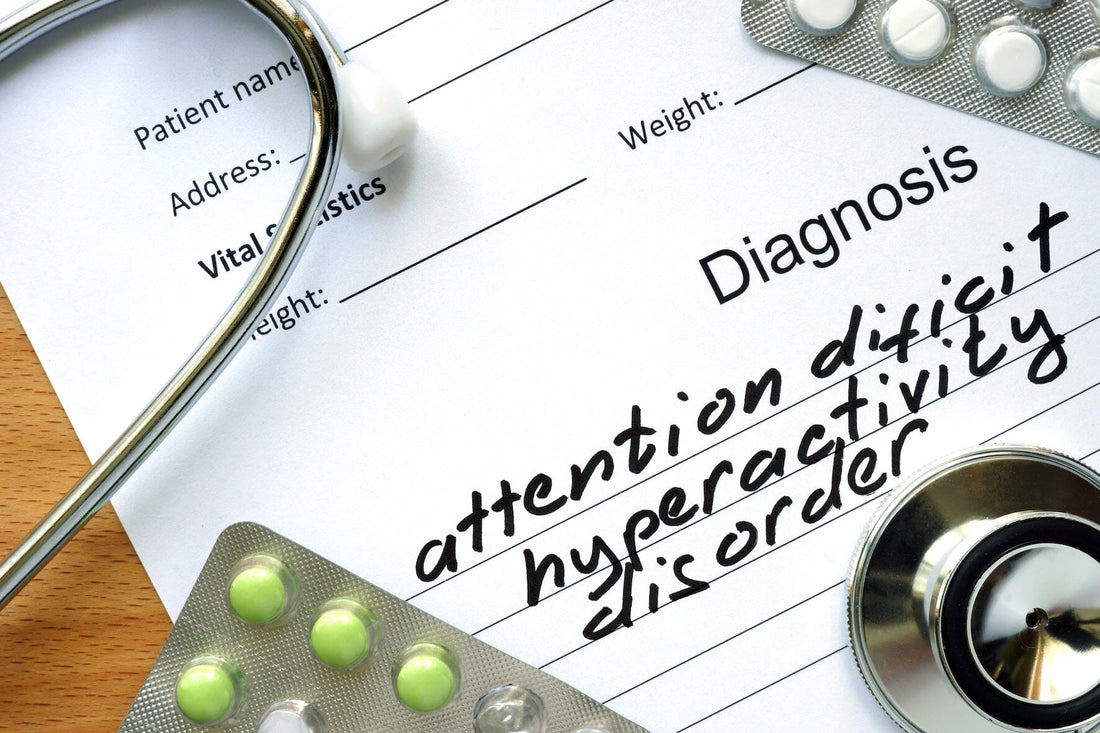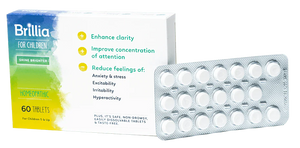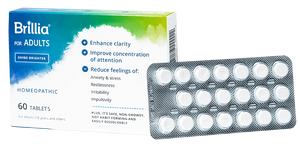Back in 2014, medical sociologist Peter Conrad and his colleagues argued that the rise of ADHD had more to do with marketing than medical need.1 He suggested that the expansion of criteria in the DSM, particularly to include adults, was a direct result of drug companies expanding into new, untapped markets.
Nearly 10 years later, the ADHD diagnosis explosion persists, with more people looking for ADHD medication in 2023 than ever before, ultimately contributing to a widespread shortage in popular prescription drugs like Adderall®.2
Are doctors being too hasty with their diagnoses? Has ADHD become trendy? Or have we simply become more educated about what ADHD looks like? When you pair ADHD awareness with better access to medical care, an explosion feels justified. After all, ADHD research in the past focused primarily on hyperactive little boys. Now we know that girls can have ADHD and so can adults.
Read on to find out what else we’ve learned about ADHD symptoms and prevalence, how diagnostic criteria has evolved, and what you can do to ensure your ADHD diagnosis is accurate.
Understanding ADHD: Definition, Symptoms & Prevalence
The DSM-5 defines ADHD as a neurodevelopmental condition characterized by impairing levels of inattention, disorganization, and/or hyperactivity-impulsivity. It is typically diagnosed in childhood and often persists in adulthood.
According to the CDC, ADHD is one of the most common mental conditions in children, with an estimated 6 million children ages 3 to 17 years having ever been diagnosed. And more than 366 million adults worldwide have ADHD.3
There are three types of ADHD defined by the following symptoms:
- Predominantly inattentive: Lack of focus, difficulty with organization and staying on track, distractibility, frequent mistakes at work or school
- Predominantly hyperactive/impulsive: Constant fidgeting, inability to sit still in quiet settings, excess energy, extremely talkative, prone to interrupting and blurting, acts without thinking
- Combined inattentive and hyperactive (most common): Symptoms of inattentiveness and hyperactivity-impulsivity present equally
Increased Awareness & Recognition of ADHD
In addition to earning its own Awareness Month as of October of 2004, there has been a steady increase in ADHD-related searches throughout the years.4 According to John Leikauf, M.D., a child and adolescent psychiatrist at Stanford Children’s Health, increased awareness coupled with decreased stigma has certainly contributed to a rise in ADHD diagnoses.5 This is especially true when it comes to girls, who have been historically missed or misdiagnosed because their symptoms are not as obvious. It’s not so much that ADHD is more common; we’ve just gotten better at spotting it.
Evolving Diagnostic Criteria & Diagnostic Tools
Increased awareness of ADHD has also led to an expansion of the diagnostic criteria. In the past, the term ADD (attention deficit disorder) was used by clinicians to refer to individuals who had trouble focusing. But, by 1994, researchers had gained a better understanding of the condition so that it no longer distinguished between ADD and ADHD but rather subcategorized the types of ADHD into the three diagnoses listed above.
To be officially diagnosed with ADHD, six or more symptoms must be present in the individual pertaining to inattention or hyperactivity. Such symptoms must be persistent and interfere with functioning or development. Symptoms must have been present before age 12 and in two or more settings (school, work, home, etc.).
Numerous ADHD tests can be found online, but if you’re looking for an official diagnosis, you should see a licensed doctor for the most accurate assessment.
Improved Access to Healthcare & Mental Health Services
Another potential contributor to the ADHD diagnosis explosion is improved access to healthcare and mental health services. Studies show that the Affordable Care Act has provided more expansive access to care, especially among minority and lower-income communities.6 Even more, doctors themselves are better trained to recognize symptoms and diagnose the condition than they were 20 years ago. And because of decreased stigma, people are more likely to bring up their concerns to a physician, which may prompt more numbers of people to be diagnosed.
Societal Factors, Environmental Influences
From primetime TV to TikTok, the media has also played an important role in the rise in ADHD diagnoses. However, such displays of ADHD should be taken with a grain of salt. According to one Canadian study which looked at the 100 most popular ADHD videos on TikTok, 52 percent of the videos were classified as misleading and only 21 percent were helpful.7 So, while the rise of ADHD in social conversations may help break down the stigma associated with the condition, it’s just as important to distinguish credible information from misinformation.
The Roles of Overdiagnosis & Misdiagnosis
Though increased awareness and education has contributed to the rise of ADHD diagnoses, it’s also possible that there are cases of overdiagnosis and misdiagnosis. After all, attention disorders are diagnosed, and stimulant drugs are prescribed, more often in the U.S. than in other countries.8 Even more, the rise of telehealth companies has made access to online prescriptions easier than ever, leading to instances of overprescription. It’s highly recommended to see a healthcare professional in person when seeking an official diagnosis or medication because online providers are notorious for being too hasty with their assessments and prescriptions.
Cultural & Stigma Factors
With ADHD being less stigmatized, people are more willing to talk about their symptoms, and even seek medical advice. However, this is not the case for some cultural backgrounds. Some research shows that, compared to white adults, adults from African–American origin have had less access to information concerning ADHD and were less likely to accept ADHD to be a medical condition. They have also been historically more mistrusting toward teaching instructors or general school staff if faced with a child’s deviant behavior. So, while ADHD is generally less stigmatized, it’s important that accurate information reaches everyone who needs it, regardless of race, gender, or economic background.
Balancing Awareness & Accurate Diagnosis for Future Generations
ADHD is not new, but we continue to expand our understanding about the condition. With increased awareness and ongoing research, it’s expected that ADHD diagnoses will become more prevalent. But it’s important that we evaluate our sources before taking their information as accurate. This is especially true when it comes to taking prescription medication, which can have a range of side effects and lead to dependency. If it turns out to be true that diagnoses are rising due to clever marketing as Peter Conrad speculated in 2014, it may be worth exploring less invasive strategies to reduce ADHD symptoms instead of opting for prescription medication right away.
Implementing healthy lifestyle changes have been proven to reduce symptoms like hyperactivity, inattention, irritability, and impulsivity, with or without medical intervention. This includes following a healthy diet, getting adequate sleep, controlling screen time, and practicing mindfulness.
If you or a loved one need more support, consider taking Brillia, a clinically-proven non-prescription medication designed to reduce symptoms of ADHD and anxiety without harsh, synthetic chemicals or harmful side effects. Brillia’s active ingredient consists of targeted antibodies to the S100B protein, an important regulator of various different intracellular and extracellular brain processes, such as enzyme activities, calcium homeostasis, and communication between neurons.
Since almost all mental and neurological disorders as well as temporal stress-induced conditions are caused by a disturbance of these processes, normalizing them is a gentle and impactful way to reduce problematic symptoms without causing drowsiness, affecting appetite, or leading to dependency. As a result of the regulating effect of Brillia on the S-100 protein, the level of monoamines (dopamine, norepinephrine, serotonin) in different parts of the brain normalizes, which are the same neurotransmitters targeted by prescription ADHD drugs. And if you or a loved one are already taking prescription medication, Brillia can be safely added to your regimen without worry because there are no contraindications associated with the medication.
Whether there is an official diagnosis of ADHD or you are just starting to notice symptoms, find out how Brillia can help children and adults and find more resources on managing ADHD at the Brillia(nce) Resource Center.
 A whole bunch of support right in your inbox.
A whole bunch of support right in your inbox.







